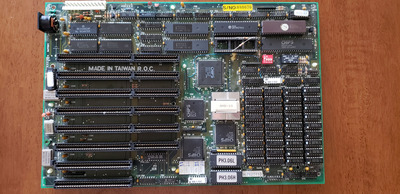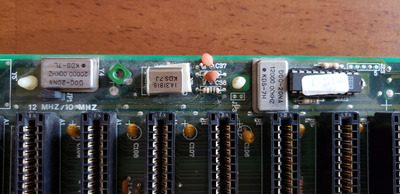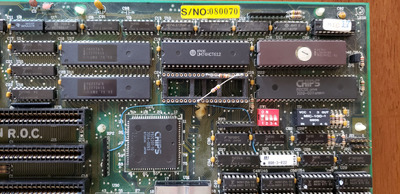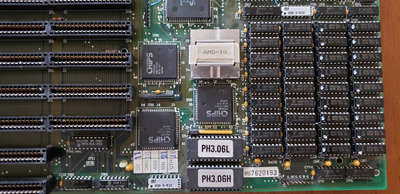First post, by Tincanalley
I purchased an old AT clone and wanted to do a restore, but I cannot identify the maker of the motherboard and there is no documentation with the machine. On the front of the machine is a sticker that reads, "Standard 286" and that is about it.
I am attaching a few pics in hopes someone might recognize it, or that it is generic enough that it follows other designs for jumpers, etc. I have noticed that it doesn't seem to have an Intel processor. There is an aluminum heatsink that seems to be slid over it and a sticker that says "AMD-10". I can't seem to slid it off with normal force and am afraid to break something if I force it any more than I've been trying. So if it is an AMD, is that a good thing, or bad? Also, if you look above it there is a socket with another socket plugged into it and 2 resistors. Is that were a math co-processor would go? If not, where does one plug one in?
I'm also assuming the chips that stickers "PH3.XXX" are the BIOS chips? I tried searching for them, but came up empty.
There is some evidence of a battery leak, but I don't see any damage to traces, just some corrosion on the legs of resistors and a couple of chips. It looks like it can be cleaned off. I don't want to risk firing it up until I've cleaned it and done some checks with my DMM.
Thanks for any and all help.



